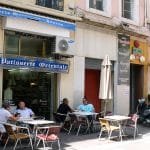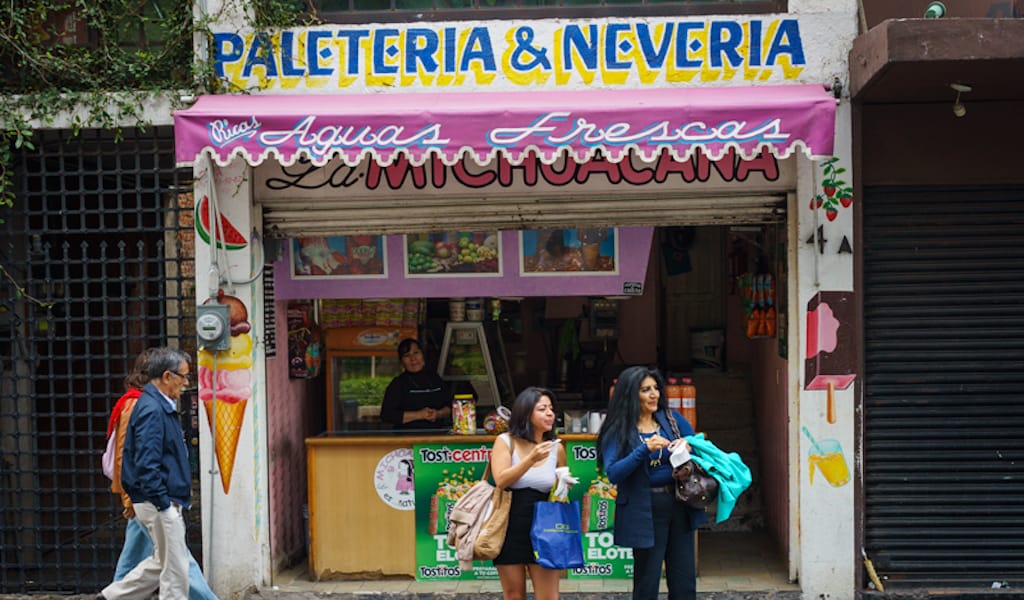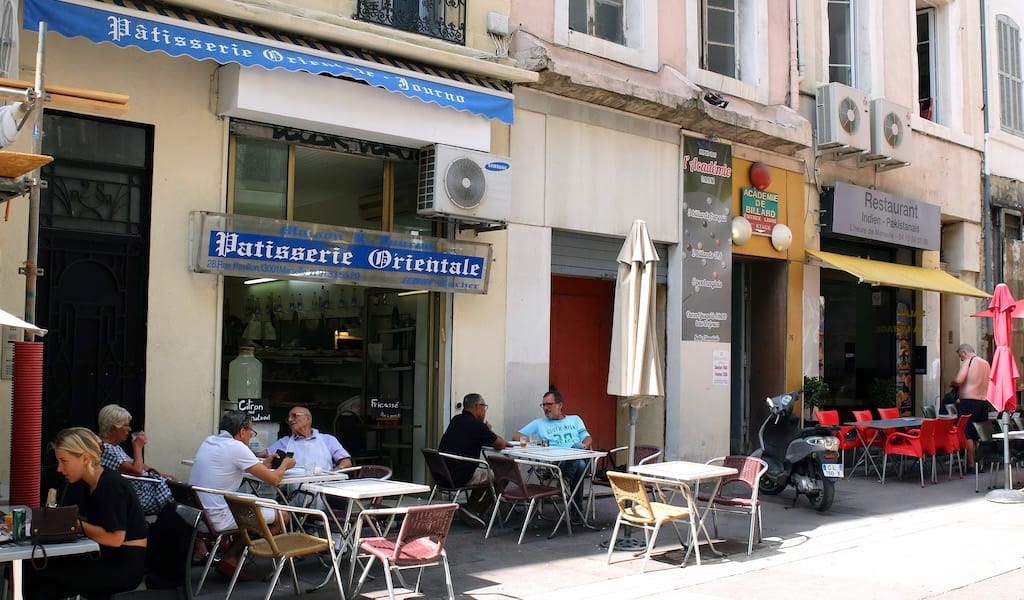Update: This spot is sadly no longer open.
A neighborhood on the southeast side of Filopappou Hill, between Acropolis, Petralona, Kallithea and Neos Kosmos, Koukaki was named after one of its first residents, Georgios Koukakis, who in the early 20th century opened a successful factory there manufacturing iron beds. Gradually the area developed into a charming middle-class neighborhood, full of life and – up until the 1980s – a place Athenians charmingly referred to as “Little Paris,” in large part because of its bohemian vibe.
The lower side of Koukaki has long been a students’ area due to the nearby Panteion University. Rents used to be relatively low, but after the opening of the new Acropolis Museum in 2009, the surrounding area has been booming, growing into an Airbnb goldmine and turning many locals against the trend. Fortunately, Koukaki’s lower side still feels less touched by change, as fewer tourists walk this far down Veikou Street. It’s here you’ll find the word “Koutoukaki” written on a window in red next to retro posters – but, like any good neighborhood haunt, everybody drops the owner’s name when speaking of this sacred place: “at Yiota’s,” they say.

On the ground floor of an apartment block, small and simple with an open kitchen, Yiota’s spot is homey and sparkling clean. With just eight tables inside and six on the shady sidewalk, most are already taken by older locals during the day. Folks in Koukaki have been coming here for years, and they lounge when the weather permits, sipping a coffee or beer for hours, reading their newspaper and chatting with the lovely Yiota Liakou.
Everybody drops the owner’s name when speaking of this sacred place: “at Yiota’s,” they say.
Born and raised in Aetoliko near Messolonghi in western Greece, Yiota moved to Koukaki with her family in the 1960s. She recalls that, back then, even her 12-year-old self could feel the vibrant energy of the area. There were lots of local shops and a real community atmosphere. But going from student to hairdresser to housewife, Yiota soon found herself growing bored at home. While the kids were preoccupied with school or other activities, she started spending more time in the kitchen, reading food magazines and cookbooks, making up her own recipes. People eventually noticed her growing talents and, 18 years ago, Yiota’s husband convinced her to open a small place where they would serve mezes paired with alcohol and coffee. As the days flew by, more and more dishes were added, and Koutoukaki became a second home for Yiota.
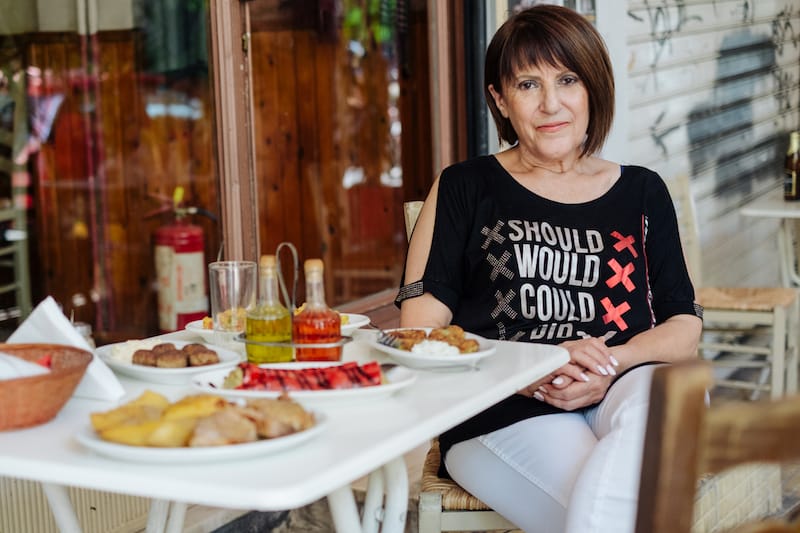
After separating with her husband, however, “at Yiota’s” became a women-run operation. There’s Eva, who has been working at the restaurant since the beginning, and Yiota’s now-grown daughter Katerina, who helps in the kitchen. Dimitra, Yiota’s sister, serves the food, makes coffees and tidies up, and Katerina’s daughter Natalia lends a hand. Yiota’s son Nikos, a lawyer, does his part too: of course, offering business advice, but also making sure his mother shuts down the place on holidays.
Yiota speaks softly, with a maternal care that permeates her cooking as well. It’s just how we like it: simple, fresh, delicious and homemade – not camouflaged in complex sauces or spices. We love the slow-cooked beef in lemon sauce; the roast pancetta served with baked potatoes in olive oil, lemon and oregano; and her moussaka in the summer, when the eggplants are perfectly in season. During winter, she makes body-warming soups and hearty giant beans, among other delicious homestyle dishes. It’s amusing to see locals popping in each morning asking for the daily specials: “Rice again with the meat? My glycemic index is high Yiota, you’ll kill me!” we hear one customer bemoaning. “Well, have it with salad then,” Yiota chides – she knows he won’t; she’s been feeding him for nearly 18 years!
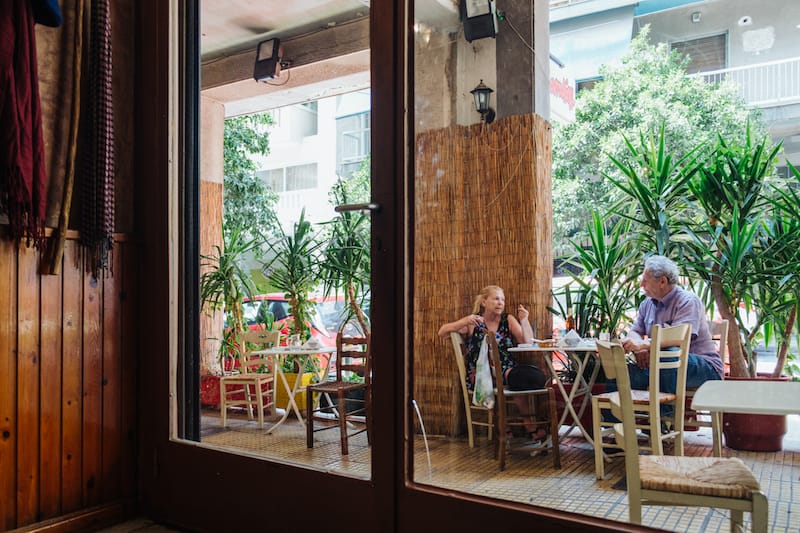
The eatery has no written menu, but apart from the daily specials there’s at least three seasonal salads, one always being a platter of boiled seasonal vegetables, including horta – the wild greens Greeks love to eat. Katerina is in charge of most of the mezes, like stuffed peppers; melitzanato (baked eggplants with tomatoes, onions and a mix of cheeses); and feta wrapped in phyllo, pan fried and drizzled with honey and sesame seeds. Yiota’s pan-fried beef liver is a classic here, but there’s also the grilled pork sausage and pancetta, fried meatballs, grilled chicken cutlets, as well as affordable (and fresh) seafood like grilled sardines and fried smelt or anchovies. Yiota tops off her meals with a complimentary sweet: in the summer it’s fresh fruit or yogurt with strawberry preserve, in the winter there’s semolina halva and baklava.
As the day drags on, younger clients start to arrive and the place starts to harken back to those vibrant times of the 60s. Among those who show up in the evening are university students, or former students who never left, or students coming back to their childhood stomping grounds to enjoy the food and company at Yiota’s. Music plays in the background all day, but at night the volume turns up and spirits get high, quite often resulting in impromptu dancing that can go on until the early morning hours. And, when the bill finally arrives, you won’t believe your eyes – it really is as if you’ve gone back in time.
Published on August 08, 2019
Related stories
August 16, 2018
Mexico CityMexico City is blessed with great weather all year round. Summer is not very hot because it’s the rainy season, and at 2,200 meters above sea level, things cool down very fast as soon as the rain starts falling. However, we still get our hot days, especially in the spring, and even early afternoons in…
April 8, 2016
QueensThe 20th century saw millions of African-Americans leave the South for cities in the North in what is called the Great Migration. And with them, they brought their food traditions, and they opened eateries and groceries and other businesses to serve these rapidly expanding communities. In Queens, African-Americans settled in Flushing, Corona and Jamaica. Today,…
Discover the diverse flavors of Marseille on our walk!
October 3, 2019
MarseilleAt a typical pâtisserie orientale, the front window is often stacked with towers of sweets – honey-soaked visual merchandising to entice passersby to pop inside. Some pastry shops line their walls with colorful geometric tiles and Moorish arches, the icing on the Maghreb cake. Pâtisserie Orientale Journo goes for a decidedly more subtle approach. Though…













































